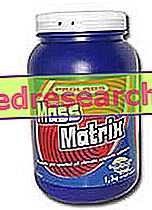
E 306 RICH NATURAL EXTRACTS IN TOCOPHEROLS OR TOCOPHEROL EXTRACT
With the general term "vitamin E", we mean not a single compound, but a set of compounds and specifically: tocopherols alpha, gamma and delta, three fat-soluble substances and antioxidants. Thanks to this last characteristic, thanks to their chemical similarity to fatty acids, tocopherols are able to prevent the phenomena of oxidation of polyunsaturated fatty acids (contained particularly in vegetable and fish oils), a key event in the development of the process of lipid peroxidation.
Foods are particularly rich in vitamin E:
- seeds (and consequently the oils derived from them, including hemp oil),
- cereals,
- fruit and vegetables.
- hazelnuts, walnuts and almonds.

Its use, however, is reduced due to the strong flavor it gives to the foods in which it is contained.
Tocopherols are mainly used in animal and vegetable oils and fats to prevent rancidity, in some baby foods, cheeses, soups, sausages, etc.
At high concentrations, vitamin E can cause several side effects, but these effects are not associated with the use of tocopherols as food additives, but as vitamin supplements.
ADI DOSE: 2 mg per kg of body weight.
Digression on fat rancidity
One of the most significant problems in the industrial field is the rancidity of foods rich in fats or oils, in particular if they are rich in polyunsaturated fatty acids (fatty acids that have more than a double bond). The rancidity of fats, besides giving an unpleasant smell and taste, a reduction in the nutritional quality of the food and its safety.
Antioxidants, oxidizing instead of food, are essential to prevent processes like the one described above from happening, effectively fighting free radicals.
The destructive action of free radicals is directed on the cells, but specifically it is directed against the fats that form the membranes, against sugars and phosphates, against DNA (where they can alter genetic information), against enzymes etc.
The continuous action of free radicals is highlighted, above all, in the premature aging of the skin and in the possibility of the onset of various serious pathologies such as cancer, diseases of the cardiovascular system, diabetes, multiple sclerosis, rheumatoid arthritis, pulmonary emphysema, cataract, Parkinson's and Alzheimer's disease, dermatitis etc.
E307-ALPHA-TOCOPHEROL (SYNTHETIC)
E308 RANGE-TOCOPHEROL (SYNTHETIC)
E309 DELTA- TOCOPHEROL (SYNTHETIC)
| E300-E304 | E306-E309 | E310 | E311 | E312 | E313 | E314 | E315 |
| E316 | E319 | E320 | E321 | E322 | E325-E27 | E330-E333 | E334-E337 |
| E338 | E339 | E340 | E341 | E342 | E343 | E350 | E351 |
| E352 | E353 | E354 | E355 | E356 | E357 | E363 | E365-E367 |
| E370 | E375 | E380 | E381 | E385 | E387 | E388 |




